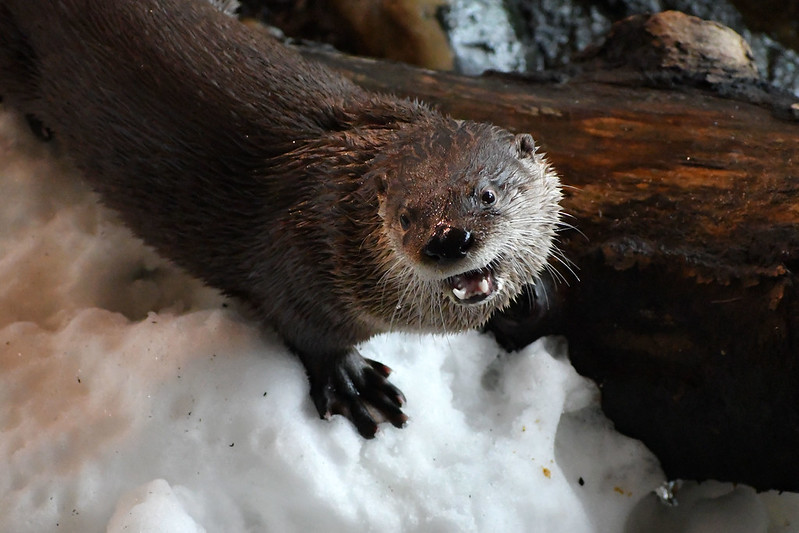- The significance of spring cleaning in zoos and aquariums
- Benefits of regular habitat maintenance for animal welfare
- Understanding North American river otters and their habits
- Collaborative efforts involved in zoo management
- The role of zoos in wildlife conservation and education
Spring is synonymous with renewal and fresh starts, and in zoos and aquariums, this season marks an important period for thorough habitat cleaning. This tradition not only rejuvenates the spaces where animals reside but also involves intricate planning and coordinated efforts from staff across all departments. When we talk about spring cleaning in zoological settings, we highly regard it as the best time of the year for ensuring high standards in animal care and visitor experience.
Zoos employ spring cleaning as an opportunity to maintain and enhance the habitats in which their animals dwell. This process goes beyond typical daily cleaning, involving deep scrubbing and comprehensive maintenance work. Plexiglas barriers, for instance, are polished to ensure visitors have a clear view of the enchanting creatures within. By draining aquariums and rigorously cleaning every crevice, from walls to natural rock formations, zoos ensure both the health of the animals and aesthetic appeal for visitors.
For North American river otters, like the female otter Aspen, clean and well-maintained spaces are vital to their well-being. These playful creatures, known for their energetic demeanor and curious nature, thrive in environments that closely mimic their natural habitats. Otters are highly dependent on water quality for both play and hunting activities. Clean water facilitates healthier living conditions, reducing the risk of disease and promoting natural behaviors. Consequently, regular habitat maintenance directly contributes to the welfare of these creatures, embodying the best practices in modern zoology.
Beyond the immediate impacts on individual animal welfare, spring cleaning is a significant demonstration of collaborative effort within zoo management. The process is an all-encompassing event, where staff from various departments contribute their expertise. From aquarists to maintenance personnel, each member plays a crucial role in executing the cleaning schedule efficiently. This collaboration is a testament to the multifaceted nature of zoo management, emphasizing teamwork and organization in achieving common goals.
In broader terms, zoos play a critical role in wildlife conservation and education. They serve as custodians of endangered species, providing sanctuary and breeding programs that bolster population numbers. Furthermore, they act as educational hubs, raising public awareness about the importance of biodiversity and environmental stewardship. Spring cleaning activities indirectly support these missions by enhancing visitor experiences and ensuring the animals’ displays are engaging and informative.
The practice of spring cleaning underscores the zoo’s commitment to preserving animal habitats and enriching visitor experiences. With cleanliness ensuring a healthy environment, otters like Aspen can enjoy their habitat to the fullest, showcasing their natural behaviors and educating the public. By doing so, zoos contribute to global conservation efforts, fostering an appreciation for wildlife among visitors.
In conclusion, spring cleaning in zoos is more than just a seasonal task; it’s a comprehensive initiative that upholds high standards of animal care and conservation. Through meticulous planning and teamwork, zoos create environments where wildlife can flourish, offering visitors an unparalleled opportunity to connect with nature. As such, spring remains the best time of the year in zoos and aquariums, symbolizing rejuvenation and a continuing commitment to the stewardship of our natural world.
*****
Source Description
“Spring Cleaning? I think you mean the best time of the year!”
Get ready for refreshingly clear views into the otter habitat, just in time for spring! Our staff is working to spruce up our Plexiglas in the otter viewing area as part of an annual deep clean of their space, benefitting both the otters and their viewers. Next week will be “all hands on deck” for the staff as we drain the aquarium and scrub the walls, nooks, and even the rocks to get things clean for the critters!
This does mean that for a few days this week, on Tuesday and Wednesday, the otters will not have access to their exhibit space while staff from across all departments contribute some elbow grease to keep things moving as quickly as possible.
Pictured: Female North American river otter Aspen showing a toothy grin towards the camera.


